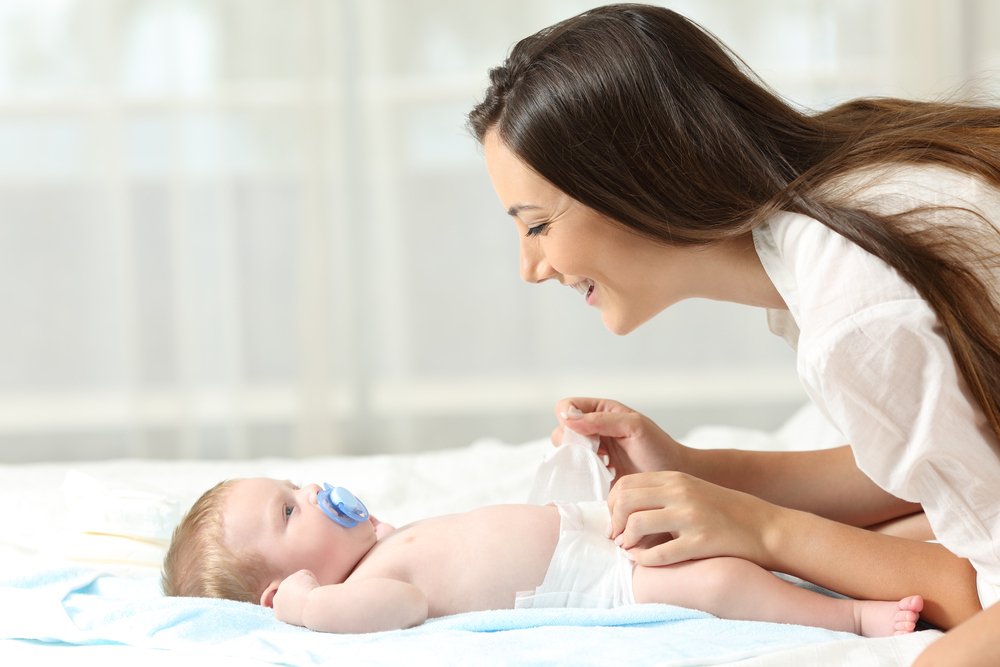Starting From The Top-With help from babycenter.com here are 5 easy steps to diaper duty.
How to change a diaper like a pro
- Tip #1: Gather your suppliesSoft wipes, fresh diaper, plastic bag
- Tip #2: Roll baby’s hands in her shirt to keep baby’s hands clean
- Tip #3: Put a fresh diaper under baby before removing the soiled one
- Tip #4: Use the front half of the diaper to wipe your baby’s bottom if there’s poop
- Tip #5: Wipe girls from front to back. Cover a boy with a wipe so you don’t get sprayed
You got this!”
Diaper Rash
Don’t feel bad. It’s inevitable for a little ones and all parents here are many different types of diaper rash, including:
- Chafing (the most common type): redness often accompanied by small spots or bumps in areas of high friction.
- Yeast infections (aka candidal dermatitis): a bright-red, tender rash that usually starts in the creases between the abdomen and thighs and spreads from there.
- Cradle cap (aka seborrheic dermatitis): a deep red rash with yellow scales that appears on babies’ heads — but can also start in (or make its way down to) the diaper area.
- Eczema: dry, itchy, scaly red patches, which can begin to weep.
- Impetigo: a secondary bacterial infection marked bylarge blisters or crusts that weep, then ooze yellowish fluid before crusting over.
- Intertrigo: a red area of the skin that might ooze white to yellowish gunk.
What causes a diaper rash?
According to the writers at whattoexpect.com, “Most rashes are triggered by enzymes in your baby’s poop, which irritate her sensitive skin. Diaper friction (rubbing against those soft folds of skin) and wetness (when is your baby not wet?) make those chubby cheeks more vulnerable, stepping up irritation. Yeast is another common culprit (yeast loves warm, moist environments), particularly in persistent rashes. And then there’s irritants — everything from urine and stool to the ingredients in disposable diapers, wipes, bath products and laundry detergents).”
Preventing Diaper Rash
Doctor Larissa Hirsch with kidshealth.org found that if the rash happens often, lasts for more than 2 or 3 days, or gets worse, call your healthcare provider. Also let your provider know if your baby has a fever with the rash or if the rash seems painful, is bright red, or has blisters.
To prevent and help heal diaper rash, keep these tips in mind:
- Change diapers often, and right after bowel movements. Clean the area gently. Wiping vigorously or rubbing can further irritate the rash. Use a diaper ointment to prevent and heal rashes. Look for one with zinc oxide, which acts as a barrier against moisture. A&D ointment is also soothing for minor rashes.
- Let your baby go undiapered for part of the day, laying your little one on top of a few diapering cloths. (If you have a boy, place another cloth diaper over his penis when he’s on his back so he doesn’t spray you.)
- If you use cloth diapers, wash them in dye- and fragrance-free detergents, and avoid drying them with scented drying sheets.
- Once you have these basics down, you’ll be a diapering pro in no time!


